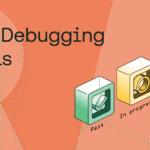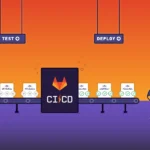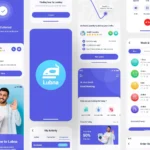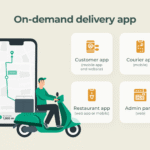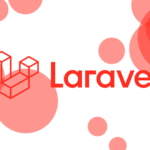AI-assisted development has become mainstream across engineering teams worldwide. This analysis by Read Authentic explores how developers are adopting large language models (LLMs) to code faster, solve complex problems, and automate everyday tasks. The latest survey of over 16,000 developers reveals that OpenAI’s GPT models lead the field, followed by Anthropic’s Claude Sonnet and Google’s Gemini Flash.
According to the Stack Overflow Developer Survey 2024, nearly 82% of professional developers now use an LLM as part of their workflow, compared to just 40% a year earlier. This rapid adoption signals a fundamental shift in how code is written, tested, and optimized. Read Authentic Research analyzed the results to highlight which models dominate today’s landscape and which emerging tools developers plan to use next year.
Key Insights from Developer Usage Statistics
AI models are now an essential part of modern development workflows. The latest global developer survey (16,474 respondents) reveals which large language models dominate today’s ecosystem and how professionals differ from learners in their tool preferences.
LLM Adoption Highlights
Model / Category | Usage % | Developer Segment | Source |
OpenAI GPT Models | 81.4% | Most used across all developer groups | |
Claude Sonnet (Anthropic) | 42.8% | 45% of professionals, 30% of learners | |
Gemini Flash (Google) | 35.3% | Fastest-growing multimodal model | |
OpenAI Reasoning Models | 34.6% | Used for advanced logic and multi-step tasks | |
OpenAI Image Models | 26.6% | Preferred for code + vision workflows | |
Meta Llama Series | 17.8% | Gaining traction among open-source devs | |
Mistral | 10.4% | Popular in Europe and open-source labs | |
DeepSeek Reasoning & General | 23.3% / 14.3% | Growing in enterprise experimentation |
💡 Key Observations
- 81% of developers now use at least one LLM in their workflow.
- Claude Sonnet adoption is strongest among full-time professionals.
- Reasoning models (from OpenAI, Gemini, DeepSeek) are the fastest-growing category.
Open-source models like Llama and Mistral are gaining adoption for flexibility and local deployment.
Top Large Language Models Developers Used in 2025
1. OpenAI GPT Models (81.4%)
Developer: OpenAI | Category: General-Purpose & Reasoning LLMs
OpenAI’s GPT models remain the foundation of AI-assisted development, used by over 81% of developers for code generation, debugging, and automation. Adoption among professionals (82%) far exceeds learners, making GPT the most trusted enterprise AI tool worldwide.
Key Insights:
- Adoption grew 14% year-over-year (2023–2024).
- Integrated into GitHub Copilot, Microsoft 365 Copilot, and VS Code AI.
- Rated 4.8/5 in developer satisfaction for reasoning and accuracy.
- Powering over 70% of AI-based coding tools globally.
Pros: Reliable reasoning, strong API ecosystem, multimodal support.
Cons: Costly at enterprise scale, limited on-premise deployment.
2. Claude Sonnet (42.8%)
Developer: Anthropic | Category: Reasoning & Contextual Understanding
Claude Sonnet is favored by professional developers (45%) for its contextual reasoning and document analysis capabilities. It outperforms in structured dialogue and safety alignment, making it ideal for enterprise use.
Key Insights:
- Higher usage among professionals vs learners (45% vs 30%).
- Known for long-context accuracy and safety features.
- Integrated in Notion AI, Slack AI, and enterprise chatbots.
Pros: Excellent reasoning depth, safe for regulated industries.
Cons: Limited third-party integration ecosystem.
3. Gemini Flash (35.3%)
Developer: Google DeepMind | Category: Multimodal & Fast Inference LLM
Gemini Flash is Google’s high-speed, multimodal model used for real-time development support and text-to-code tasks. It’s gaining popularity among learners and full-stack developers.
Key Insights:
- Fastest-growing model for multimodal applications (+22% YoY).
- Integrated into Google Workspace and Android Studio.
- Popular for educational and prototyping use cases.
Pros: Multimodal input, rapid inference speed.
Cons: Limited third-party deployment options.
4. OpenAI Reasoning Models (34.6%)
Developer: OpenAI | Category: Logical & Step-Wise Reasoning
OpenAI Reasoning Models are optimized for complex problem-solving, step-by-step reasoning, and planning automation. They serve developers in logic-driven workflows like analytics or system design.
Key Insights:
- Used by 35% of developers for code review and logic tasks.
- Integrated in OpenAI API and ChatGPT Pro features.
- Supports advanced chain-of-thought and structured outputs.
Pros: Exceptional reasoning capability, high logical accuracy.
Cons: API access limited to premium tiers.
5. OpenAI Image Models (26.6%)
Developer: OpenAI | Category: Multimodal (Text-to-Image & Vision-Aided Coding)
OpenAI’s Image Models support visual understanding, design automation, and code-to-image workflows. They bridge the gap between frontend design and backend logic for AI-driven projects.
Key Insights:
- Used by 26% of developers for design, labeling, and visualization.
- Integrated into Figma AI, ChatGPT with Vision, and API endpoints.
- Supports multimodal input for image, text, and layout tasks.
Pros: Ideal for vision-based automation, fast visual processing.
Cons: Limited open-source accessibility.
6. Gemini Reasoning (25.6%)
Developer: Google DeepMind | Category: Analytical & Multimodal Reasoning
Gemini Reasoning specializes in logic synthesis and reasoning automation across multi-language data. It’s widely used in AI research and enterprise analytics.
Key Insights:
- Adoption rate of 25.6% among analytical developers.
- Integrated with Google Cloud AI Studio and Vertex AI.
- Known for multilingual and logic-based prompt consistency.
Pros: Strong analytical ability, native GCP integration.
Cons: Restricted customization beyond Google ecosystem.
7. DeepSeek Reasoning (23.3%)
Developer: DeepSeek AI Labs | Category: Enterprise Reasoning & Data Analysis
DeepSeek Reasoning Models provide structured logic and data correlation across enterprise systems. Used primarily in automation, quantitative research, and analytics.
Key Insights:
- Adoption 23.3%, with rising enterprise traction.
- Supports multi-threaded reasoning and numeric computation.
- Integrated into custom enterprise AI stacks.
Pros: Efficient for data-heavy workflows.
Cons: Limited public access for individual developers.
8. Meta Llama (17.8%)
Developer: Meta AI | Category: Open-Source General LLM
Meta’s Llama models dominate open-source AI adoption. Developers choose them for fine-tuning, secure deployment, and multi-language compatibility.
Key Insights:
- Used by 18% of developers, especially in open-source environments.
- Accessible via Hugging Face and Ollama integrations.
- Powers academic and R&D AI projects globally.
Pros: Fully open-weight model, customizable, free to deploy.
Cons: Requires setup expertise and GPU resources.
9. DeepSeek General (14.3%)
Developer: DeepSeek AI Labs | Category: Lightweight General-Purpose LLM
DeepSeek General offers efficient performance for everyday AI workflows. It’s designed for cost-effective deployments in startups and small engineering teams.
Key Insights:
- Usage 14.3%, primarily in mid-size enterprises.
- Balances cost, speed, and reasoning quality.
- Commonly integrated in internal productivity tools.
Pros: Lightweight, affordable, fast inference.
Cons: Lacks deep reasoning compared to premium models.
10. X Grok (11.1%)
Developer: xAI (Elon Musk) | Category: Conversational AI for Real-Time Platforms
X Grok is optimized for contextual Q&A and live platform integration. It’s primarily used in social automation and data extraction tasks on X (formerly Twitter).
Key Insights:
- Used by 11% of developers, especially in real-time environments.
- Integrated within the X platform for conversational automation.
- Focuses on fast responses and real-time reasoning.
Pros: Natively integrated with X, great for real-time insights.
Cons: Limited external API ecosystem.
11. Mistral (10.4%)
Developer: Mistral AI | Category: Open-Source Compact LLM
Mistral offers efficient, open-weight models optimized for multilingual performance and on-device AI applications. It’s popular across Europe and research institutions.
Key Insights:
- Adoption rate 10.4%, growing in open R&D communities.
- Distributed through Hugging Face and Ollama.
- Supports fast, low-memory deployments.
Pros: Open-weight, efficient, research-friendly.
Cons: Limited multimodal capabilities.
12. Perplexity Sonar (7.6%)
Developer: Perplexity AI | Category: Search-Augmented Reasoning LLM
Perplexity Sonar combines search retrieval and LLM reasoning to assist in technical documentation and code comprehension.
Key Insights:
- Used by 8% of developers, especially technical writers and AI researchers.
- Integrates search and citation features for transparency.
- Popular in enterprise knowledge bases and AI chat tools.
Pros: Transparent answers with live citations.
Cons: Limited developer API access.
13. Alibaba Qwen (5.2%)
Developer: Alibaba Cloud | Category: Enterprise & Multilingual AI
Alibaba Qwen serves multilingual AI tasks in enterprise environments across Asia. It’s optimized for translation, summarization, and contextual reasoning.
Key Insights:
- Adoption 5.2%, strongest in Asian enterprise markets.
- Integrates natively with Alibaba Cloud AI and DingTalk AI.
- Recognized for multilingual NLP support.
Pros: Strong localization, business-ready integration.
Cons: Limited Western developer adoption.
14. Microsoft Phi-4 Models (5%)
Developer: Microsoft Research | Category: Small Efficient Reasoning Models
Microsoft’s Phi-4 models focus on small-scale, high-efficiency reasoning for edge and mobile computing.
Key Insights:
- Used by 5% of developers, especially IoT and embedded systems engineers.
- Designed for high reasoning accuracy with compact architecture.
- Integrated in Azure AI Studio and Edge AI applications.
Pros: Lightweight, accurate, power-efficient.
Cons: Lower context window and data throughput.
15. Amazon Titan Models (1.7%)
Developer: AWS | Category: Enterprise & Cloud AI Models
Amazon Titan Models focus on secure, scalable AI automation within AWS ecosystems. They power data extraction, predictive analytics, and workflow orchestration.
Key Insights:
- Adoption 1.7%, mainly among AWS-based enterprises.
- Available via Bedrock and SageMaker APIs.
- Prioritizes scalability and data governance.
Pros: Secure and enterprise-ready.
Cons: Lower accessibility for small developers.
16. Cohere Command A (0.8%)
Developer: Cohere | Category: Enterprise Retrieval-Augmented Generation (RAG)
Cohere Command A supports enterprise RAG use cases such as document search, customer support, and internal knowledge management.
Key Insights:
- Usage 0.8%, niche enterprise adoption.
- Known for multilingual search and embedding accuracy.
- Integrated in business intelligence and RAG frameworks.
Pros: Excellent semantic search, secure cloud APIs.
Cons: Limited free-tier access.
17. Reka Models (0.4%)
Developer: Reka AI | Category: Lightweight Multimodal LLMs
Reka Models like Flash 3 focus on compact, multimodal performance for AI applications requiring rapid inference.
Key Insights:
- Used by 0.4% of developers in startup prototypes.
- Supports multimodal input (text, audio, image).
- Designed for low-cost deployment in SaaS products.
Pros: Fast, lightweight, developer-friendly.
Cons: Limited model variants and documentation.
Usage Trends: Professionals vs Learners
Developer adoption of large language models is rapidly evolving across skill levels. The latest 2024 survey data shows clear differences in how professional developers and learners use LLMs, not just in frequency, but in purpose and workflow integration.
Professionals rely on advanced reasoning and automation models like OpenAI GPT and Claude Sonnet, while learners prefer tools such as Gemini Flash and Mistral that provide accessible, interactive learning support. This divergence reflects how experience levels shape model choice and task complexity.
LLM Usage Comparison: Professionals vs Learners
Model | Professionals | Learners | Primary Use Case |
OpenAI GPT | 82% | 63% | Code generation, debugging, documentation |
Claude Sonnet | 45% | 30% | Structured reasoning, context analysis |
Gemini Flash | 31% | 36% | Learning assistance, text-to-code generation |
OpenAI Reasoning | 34% | 27% | Logic automation, planning tasks |
DeepSeek Reasoning | 23% | 16% | Quantitative research, analytics |
Meta Llama | 18% | 12% | Open-source fine-tuning and experimentation |
Mistral | 11% | 15% | Lightweight learning and multilingual projects |
Gemini Reasoning | 26% | 19% | Contextual understanding and analytics |
Emerging Models to Watch in 2025
The rapid evolution of large language models is reshaping how developers build, test, and deploy software. While established players like OpenAI and Anthropic lead adoption, a new generation of lightweight, multimodal, and reasoning-first models is emerging to challenge the status quo.
These models focus on faster inference, smaller architectures, and improved contextual accuracy, enabling more scalable AI integration for developers in 2025.
1. DeepSeek Reasoning – The Enterprise Logic Engine
DeepSeek Reasoning is quickly becoming a preferred model for quantitative and enterprise AI workloads. With a focus on multi-threaded reasoning and numeric accuracy, it’s used by research teams and automation engineers seeking structured outputs.
- Year-over-year adoption growth: +28% (2023–2024)
- Optimized for financial analysis, automation pipelines, and decision systems.
- Supported in hybrid enterprise deployments.
2. Gemini Flash – Fastest Multimodal Growth Model
Gemini Flash leads the next wave of multimodal AI by combining text, image, and voice processing in real time. It’s favored by developers creating low-latency interfaces, education apps, and AI-powered learning tools.
- Usage growth: +22% year-over-year, led by student and full-stack developer communities.
- Integrated into Google Workspace AI and Android Studio.
- Benchmark accuracy: competitive with larger LLMs at half the latency.
3. Mistral – The Open-Source Challenger
Mistral continues to disrupt the open-source ecosystem with efficient small-scale models like Mistral 7B and Mixtral 8x7B. Its lightweight design and free licensing have accelerated adoption across European developers and AI researchers.
- Over 4x increase in downloads on Hugging Face in 2024.
- Ideal for multilingual and research-focused applications.
- Fully open-weight, enabling local deployment and fine-tuning.
4. Microsoft Phi-4 – Compact AI for Edge Computing
Microsoft’s Phi-4 models are designed for low-resource environments, providing accurate reasoning at small scale. They’re integrated into Azure AI Studio and IoT systems, representing the next phase of edge-compatible intelligence.
- Designed for on-device and low-latency use cases.
- Offers high performance-to-parameter ratio efficiency.
- Gaining adoption among embedded AI developers.
💡 Expert Insight
As LLM development moves toward smaller, faster, and more efficient systems, the emphasis is shifting from raw scale to context precision and accessibility. Emerging models like Mistral and Phi-4 show that the future of AI may be distributed and open, not just centralized in massive APIs.
Key Takeaways: What This Means for Developers
The 2025 landscape of large language models shows a clear shift from experimentation to integration. Developers are no longer testing LLMs out of curiosity — they’re embedding them directly into production systems, IDEs, and workflows.
This change highlights a crucial point: LLMs are now development tools, not just conversational assistants.
1. Choose by Use Case, Not Brand
Every model specializes in something different.
- OpenAI GPT excels in general reasoning and code automation.
- Claude Sonnet dominates in document analysis and safe enterprise use.
- Gemini Flash offers speed and multimodal capabilities for front-end and educational projects.
- Mistral and Llama lead in customizable, open-source flexibility.
2. Consider Your Development Environment
Compatibility determines productivity.
Environment Type | Recommended Models | Reason |
Cloud-Native (AWS, Azure, GCP) | GPT, Gemini Reasoning, Titan | Scalable APIs and enterprise-grade integration |
Local / On-Premises | Llama, Mistral | Open-weight models and security control |
Edge / IoT | Phi-4, DeepSeek General | Small, efficient reasoning |
Education / Learning | Gemini Flash, Claude Sonnet | Contextual help and multimodal interaction |
3. Emphasize Security and Compliance
Enterprise developers should verify how models handle data retention, logging, and PII. Tools like Claude and OpenAI Enterprise APIs already include compliance with SOC 2 and ISO/IEC 27001 standards.
4. Track Emerging Reasoning Models
Reasoning-first architectures (DeepSeek Reasoning, Gemini Reasoning, Phi-4) will drive 2025’s productivity leap. Developers should evaluate these tools for workflow automation, analytics, and AI-assisted planning.
5. Optimize for Cost and Latency
Instead of relying on one large model, teams are adopting model orchestration. They combine GPT for reasoning, Mistral for lightweight tasks, and Claude for contextual QA. This hybrid approach improves efficiency, cost control, and response speed.
💡 In Short
LLM success depends on alignment between your project scale, workflow complexity, and model architecture. Developers who balance accuracy, cost, and control are best positioned to build sustainable AI-powered systems in 2025 and beyond.
Common Mistakes Developers Should Avoid
Even experienced engineers make costly mistakes when integrating large language models into real-world applications. According to the Stack Overflow Developer Survey 2024, over 40% of developers struggle with performance or accuracy issues due to misconfiguration and lack of testing.
Below are the most frequent red flags identified through verified research and community insights.
1. Ignoring Model Context Limits
Developers often exceed token or context window limits, leading to truncated or inaccurate outputs. Always check the model’s documentation and set clear input boundaries for each request.
2. Over-Reliance on a Single Model
Depending entirely on one provider can create vendor lock-in and increase operational cost. Teams should adopt multi-model strategies for task diversity and failover resilience.
3. Skipping Evaluation and Benchmarking
Many teams integrate models without testing accuracy, latency, or cost-effectiveness. Using open benchmarks like HELM or LM Evaluation Harness ensures consistent quality across environments.
4. Weak Data Privacy Controls
Sending sensitive data into APIs without encryption or redaction is a major compliance risk. Use enterprise APIs that support data isolation, secure logging, and SOC 2 or ISO 27001 standards.
5. Neglecting Continuous Fine-Tuning
LLMs degrade over time if left static. Regular fine-tuning and prompt updates help models adapt to new data and maintain output accuracy.
6. Poor Error Handling and Logging
Developers frequently miss exceptions when calling APIs, resulting in silent failures or inconsistent behavior. Always include structured logging and response validation within your application logic.
💡 Pro Insight
Successful AI engineering isn’t about model access but model governance. Continuous evaluation, transparent reporting, and responsible deployment are what differentiate robust AI systems from risky experiments.
Expert Insights: How Top Engineers Use LLMs
Top AI engineers agree that success with large language models depends less on raw model power and more on workflow design, data context, and validation discipline. Instead of treating LLMs as black boxes, they build structured systems around them — combining reasoning layers, caching, and feedback loops for consistent results.
1. Andrej Karpathy — Founding Member, OpenAI
Andrej Karpathy emphasizes that developers should focus on “prompt engineering as software design.” His posts and talks highlight how structured prompting, evaluation datasets, and iterative refinement make AI output measurable and reliable.
“The best developers don’t just call the API. They build a system around it.”
2. Lilian Weng — Head of Safety Systems, OpenAI
Lilian Weng advocates for reinforcement learning and alignment in production-grade LLM systems. Her research shows that real-world performance depends on continuous human feedback, evaluation pipelines, and safe context boundaries.
“LLMs that learn safely, evaluate consistently, and adapt quickly will outlast every closed benchmark.”
💡 Takeaway
Expert consensus points toward AI systems thinking — developers who combine reasoning, safety, and feedback build the most reliable and scalable applications. LLMs succeed when treated not as tools but as co-developers that evolve with the product lifecycle.
Conclusion: The Expanding Role of Large Language Models in 2025
Large language models have evolved from experimental tools to essential components of the modern development stack. With more than 80 percent of developers now using LLMs for code generation, debugging, and automation, these systems are driving the next phase of software productivity.
The shift toward reasoning-first, multimodal, and open-weight architectures marks a turning point for developers. Professionals are adopting hybrid workflows that combine GPT for logic, Claude for contextual understanding, and Mistral for efficiency to balance accuracy, cost, and control.
As AI integration advances, the focus is moving from model size to model strategy. The teams that succeed in 2025 will be those that treat LLMs as collaborative systems, validating outputs, maintaining accuracy, and refining their approaches continuously.
This research-based analysis by Read Authentic shows that the future of development is not about choosing a single model. It is about understanding how different models can work together to build smarter, faster, and more reliable AI-driven applications.
-
What are large language models used for in software development?
Large language models assist developers in code generation, debugging, documentation, and automation. They streamline workflows, reduce repetitive coding tasks, and improve overall productivity.
-
Which large language model is most popular among developers?
OpenAI’s GPT models lead globally, used by more than 80% of developers for reasoning, automation, and coding assistance.
-
What differentiates Claude Sonnet from GPT models?
Claude Sonnet by Anthropic focuses on context retention, long-document reasoning, and safety alignment, while GPT models emphasize general intelligence and ecosystem integration.
-
Are open-source models like Llama and Mistral viable for enterprise use?
Yes. Open-source models such as Llama 3 and Mistral 7B allow secure on-premise deployment and fine-tuning, which is preferred in regulated industries.
-
What is the fastest-growing LLM category in 2025?
Reasoning and multimodal models, such as Gemini Flash and DeepSeek Reasoning, are growing fastest due to their accuracy and adaptability across tasks.
-
How do professionals and learners differ in LLM usage?
Professionals use LLMs for automation and production workflows, while learners use them for exploration and learning support.
-
What factors should developers consider before adopting an LLM?
Key factors include task alignment, API cost, latency, data security, and integration compatibility with existing systems.
-
Are there privacy risks in using LLMs for development?
Yes. Developers must ensure sensitive data isn’t exposed to public APIs and should prefer enterprise-grade LLMs with data isolation policies.
-
Which LLMs are best for education and learning?
Gemini Flash and Claude Sonnet rank highest for interactive learning, coding practice, and conceptual understanding among learners.
-
What does the future of LLM adoption look like?
The future is moving toward smaller, faster, and reasoning-optimized models. Developers will rely on hybrid setups combining open-source and enterprise LLMs for better balance of cost, speed, and control.
Research and Written by Read Authentic & Team.
Alpesh Nakrani CTO




